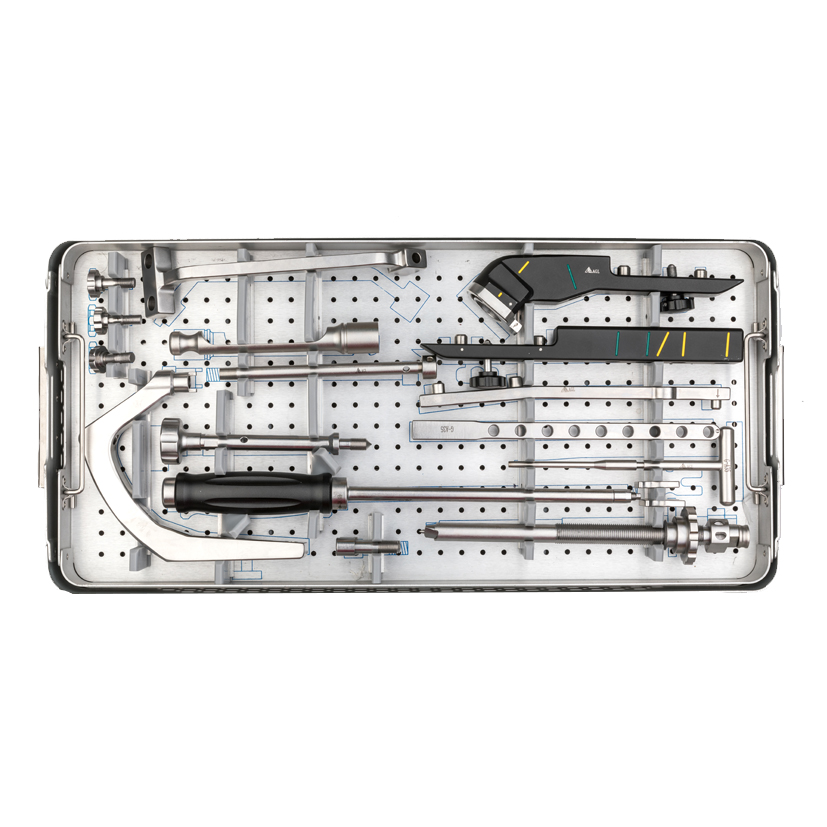Meta Description:
Learn when to choose unicompartmental knee arthroplasty (UKA) vs total knee arthroplasty (TKA). Discover why traditional indications like Kozinn & Scott’s criteria are outdated and how modern implants, HXLPE, and robotic systems are reshaping the decision-making process.
Why the “Old Rules” No Longer Apply
For decades, surgeons have asked the same question:
Should I perform a TKA or a UKA?
What used to be a straightforward choice based on rigid inclusion criteria has evolved into a precision medicine decision. The classic Kozinn & Scott standards — age >60, weight <82 kg, and low activity — are relics of the past.
With advanced prosthesis design, highly cross-linked polyethylene (HXLPE), and robotic-assisted navigation, the boundaries between UKA and TKA have dramatically shifted.
Today’s goal is not just implant longevity, but function, satisfaction, and safety.

When TKA Remains the Gold Standard
Despite UKA’s rise, TKA (Total Knee Arthroplasty) remains indispensable in several scenarios:
1. Inflammatory Arthritis
Systemic diseases like rheumatoid arthritis (RA) or psoriatic arthritis destroy the entire joint.
A partial replacement cannot halt the inflammatory cascade — TKA is mandatory.
2. True Tricompartmental Osteoarthritis
When both tibiofemoral compartments and the patellofemoral joint are affected, UKA won’t suffice.
Complete resurfacing restores alignment and function.
3. Severe Patellofemoral Disease (Especially Lateral)
Modern evidence shows mild-to-moderate medial or central PFJ arthritis is not a contraindication for UKA.
However, severe lateral PFJ bone loss or groove deformity causes postoperative pain — here, TKA is the only rational choice.
4. Fixed Deformities
- Coronal plane: Fixed varus/valgus >15°
- Sagittal plane: Fixed flexion contracture >15° If the deformity is irreducible, stability cannot be guaranteed — choose TKA.
5. Global Ligamentous Instability
If ACL, PCL, or collateral ligament function is lost in multiple planes, a UKA cannot maintain balance.
When UKA Is the Smarter Choice
UKA (Unicompartmental Knee Arthroplasty) is no longer reserved for the frail or sedentary.
It is a biomechanically conservative, function-preserving solution for the right patient profile.
1. ACL: The Great Misunderstood
Traditionally, ACL deficiency meant “no UKA.” That’s obsolete.
- Functional stability matters, not MRI findings. Patients with degenerative ACL loss but stable exams (negative Lachman/anterior drawer) do just as well as ACL-intact patients.
- If functional instability exists, perform UKA + ACL reconstruction. Outcomes outperform TKA in matched cohorts.
👉 Rule of thumb: Don’t read the ACL — test it.
2. Patellofemoral Joint (PFJ)
Mild or central PFJ degeneration ≠ contraindication.
In fact, UKA’s valgus correction can improve tracking and reduce anterior knee pain.
Only severe lateral PFJ arthritis with bone defects should exclude UKA.
3. Age, BMI, and Activity Level
Forget the “old man’s implant” stereotype.
Two ideal UKA candidates emerge from modern data:
- Group 1: <60 years, active lifestyle → desire for natural kinematics and high FJS (Forgotten Joint Score).
- Group 2: >75 years, frail, comorbid → need lower surgical stress, faster recovery, and fewer complications.
BMI is not a dealbreaker.
Meta-analyses show no higher revision rates in obese patients.
For morbid obesity (BMI >40), UKA may even be safer — infection risk with TKA skyrockets.
4. Deformity: It’s About Flexibility, Not Numbers
- Varus/valgus <15°, if passively correctable, is acceptable.
- Flexion contracture <15° is also fine — even higher if soft-tissue balance allows.
Functional reducibility is the true indicator, not raw angles.
Evidence-Based Trade-Offs: Explaining Choices to Patients
Modern decision-making in knee arthroplasty is preference-sensitive — not dogmatic.
TKA Offers
✅ Lower long-term revision rates (6.2% @15 years)
❌ More bone loss, loss of natural feel, 15–20% dissatisfaction
UKA Offers
✅ More natural movement, faster recovery, lower VTE & cardiac event risk
✅ “Forgotten Joint” satisfaction (75% vs 62%)
❌ Higher revision rates (18.2%)
However, UKA → TKA revision is relatively simple and performs close to a primary TKA.
By contrast, TKA → TKA revision is complex, costly, and functionally inferior.
The Modern Algorithm for Decision-Making
| Patient Type | Recommended Procedure | Key Rationale |
|---|---|---|
| Inflammatory arthritis | TKA | Systemic joint destruction |
| True tricompartmental OA | TKA | Multi-compartment disease |
| Severe lateral PFJ arthritis | TKA | Avoid anterior knee pain |
| Functionally stable ACL | UKA | Preserve biomechanics |
| Correctable deformity <15° | UKA | Safe & functional |
| Active <60 years | UKA | Superior function & satisfaction |
| Frail elderly >75 years | UKA | Lower risk, faster recovery |
Conclusion: The New Era of Individualized Knee Arthroplasty
The evolution of implant materials, robotics, and patient-centered care has blurred the rigid boundary between TKA and UKA.
Modern orthopedics is no longer about “which operation is better,” but rather “which operation fits the patient’s life goals.”
Abandon the Kozinn & Scott relics, and embrace EBM-driven, personalized decisions — that’s the future of joint replacement.
Disclaimer:
This article and all articles on this website are for reference only by medical professionals; specific medical problems should be treated promptly. To ensure “originality” and improve delivery efficiency, some articles on this website are AI-generated and machine-translated, which may be inappropriate or even wrong. Please refer to the original English text or leave a message if necessary. Copyright belongs to the original author. If your rights are violated, please contact the backstage to delete them. If you have any questions, please leave a message through the backstage, or leave a message below this article. Thank you!
Like and share, your hands will be left with the fragrance!
More info. https://linktr.ee/shifreeman




